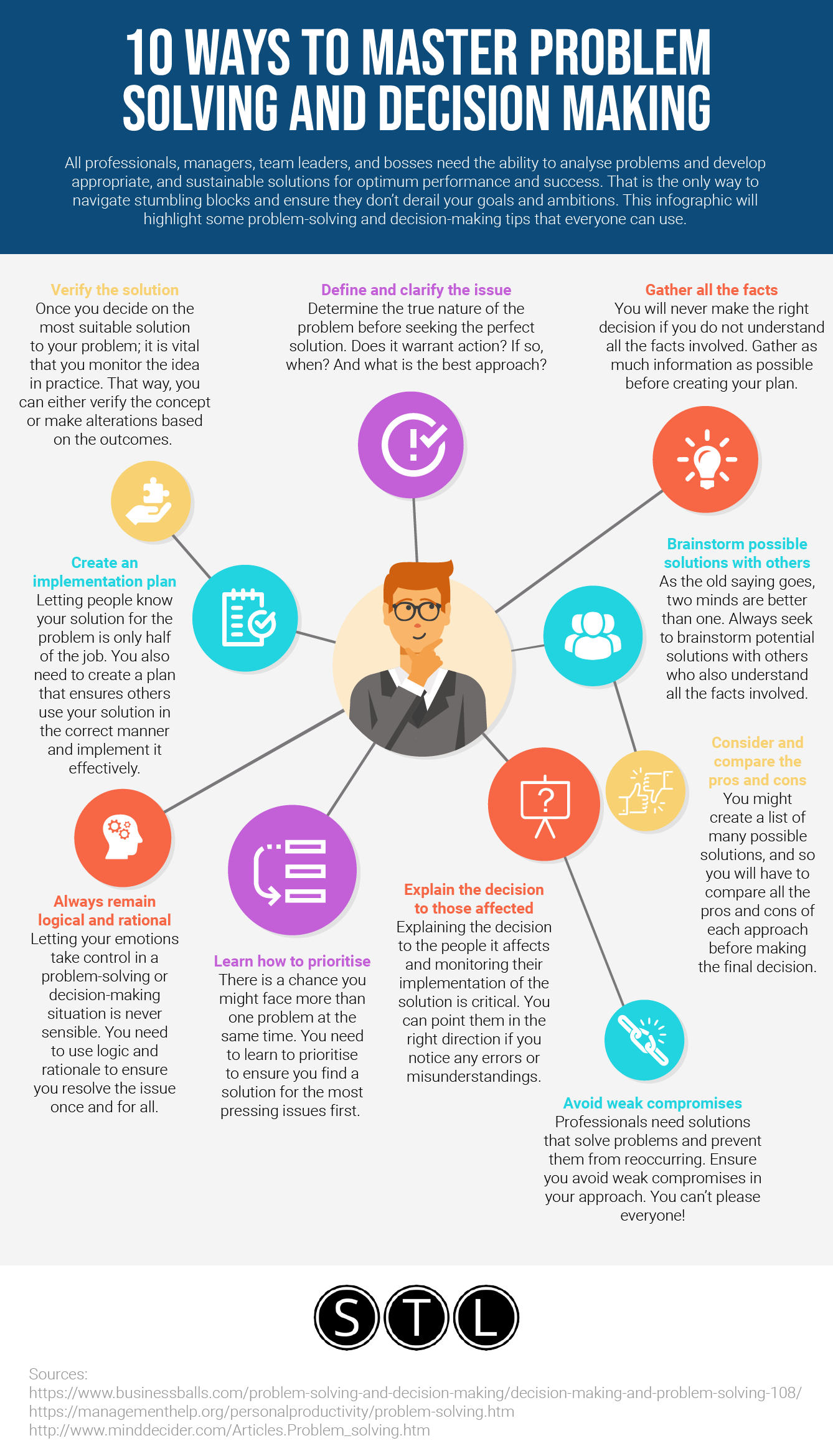Decisions Demystified: Breaking Into the Procedure

Within our fast-paced world, the ability to make smart decisions is frequently the key to achieving success, in terms of your personal life and in your career. Yet numerous people find ourselves dealing with choices, whether it’s a minor daily decision or a significant life change. Perfecting the art of effective decision-making can create new opportunities and improve our overall quality of life. This article aims to clarify the decision-making process by exploring ten successful techniques that can substantially improve your skills.

From the psychology behind great decisions to useful frameworks that help you assess options, we will explore how you can make more effective choices under pressure. Whether you are a decision-maker facing tough calls or an individual navigating daily dilemmas, grasping the role of emotional intelligence and intuition in your decision-making can enable you to act with assurance and clarity. Join us as we discover strategies to tackle decision fatigue, avoid pitfalls like paralysis by analysis, and ultimately learn how to make decisions that lead to a rewarding life.
Strategies for Effective Decision-Making
One of the most vital techniques for effective decision-making is to create a systematic framework to direct the procedure. This entails establishing clear criteria for assessing options, prioritizing priorities, and considering potential outcomes. By using tools such as decision matrices or pros and cons lists, individuals can thoroughly analyze their choices. This approach not only defines the decision-making path but also reduces confusion and helps avoid the traps of emotional bias.
Another important approach is to develop emotional intelligence. Understanding your emotions and acknowledging how they influence your decisions can lead to more effective choices. By spending a moment to reflect on what you’re feeling and why, you can distill your instincts from the reality at hand. Incorporating mindfulness practices can improve this element, allowing you to remain present and focused, leading to more coherent and more empathetic decision-making.
Lastly, reflecting from past decisions is vital for improving future choices. Look back on previous outcomes, both good and bad, to understand the factors that contributed to those results. This retrospective analysis can disclose patterns in your decision-making process that you can exploit for growth. Having a mindset of curiosity and openness to learning fosters resilience, allowing you to adjust and hone your abilities avoiding the burden of regret.
Understanding the Psychology of Decision-Making
The choice-making process is greatly shaped by psychological factors that affect how we perceive options and weigh potential outcomes. One of the crucial factors is cognitive biases, which can lead individuals to make poor decisions based on insufficient information or emotional responses. For instance, confirmation bias causes people to favor information that supports their pre-existing beliefs, often overlooking contradictory evidence. Understanding these biases is vital for honing the art of smart decision-making.
Emotional awareness also plays a vital role in making effective choices. Being https://dev-westudy.accedo.gr/members/clothself21/activity/2910797/ of and controlling emotions can help individuals navigate complex decisions, especially under pressure. Those with strong emotional intelligence are more suited to handle pressure and assess the feelings of others, promoting more considerate choices. Incorporating emotional awareness into decision-making can transform impulsive reactions into purposeful actions aligned with long-term goals.
Finally, the environment in which decisions are made affects to the mindset of choices. Surroundings, social influences, and time constraints can all impact our ability to analyze effectively and make informed decisions. For instance, decision fatigue can set in after prolonged periods of making choices, resulting in poor outcomes. By being aware of contextual factors and creating a conducive decision-making environment, individuals can boost their clarity and focus, culminating in better choices overall.
Conquering Obstacles in Decision-Making
One of the most critical difficulties individuals encounter in decision-making is the intense feeling of pressure, particularly when consequences are high. In times of urgency, it is tempting to rush into decisions without carefully considering the implications. To combat this, you can employ techniques such as the strength of pause, which encourages taking a step back to analyze the circumstance calmly. This brief moment of reflection allows you to organize your thoughts, reduce anxiety, and frequently leads to more balanced and informed decisions.
Another frequent hurdle is decision fatigue, a mental phenomenon that occurs when we are faced with too many choices throughout the day. As energy and mental clarity diminish, even simple decisions can feel extremely taxing, leading to poor outcomes. To mitigate decision fatigue, adopt daily habits that streamline your choices, such as prioritizing essential decisions early in the day or reducing your options. This structured approach will help preserve mental clarity and ensure you reserve your cognitive resources for the most critical decisions.
Lastly, fear of making the wrong decision can freeze individuals, preventing them from taking action altogether. This fear often stems from the desire to achieve ideal outcomes and avoid potential regrets. To overcome this challenge, embrace a perspective that views decisions as chances for growth rather than risks. Additionally, consider https://rhythmgamingworld.com/members/neckcanvas89/activity/2567890/ of emotional intelligence in acknowledging and managing your fears. By conditioning your brain to acknowledge that every decision—even those that do not yield the expected results—provides worthwhile learning experiences, you can approach decision-making with greater confidence and resilience.
